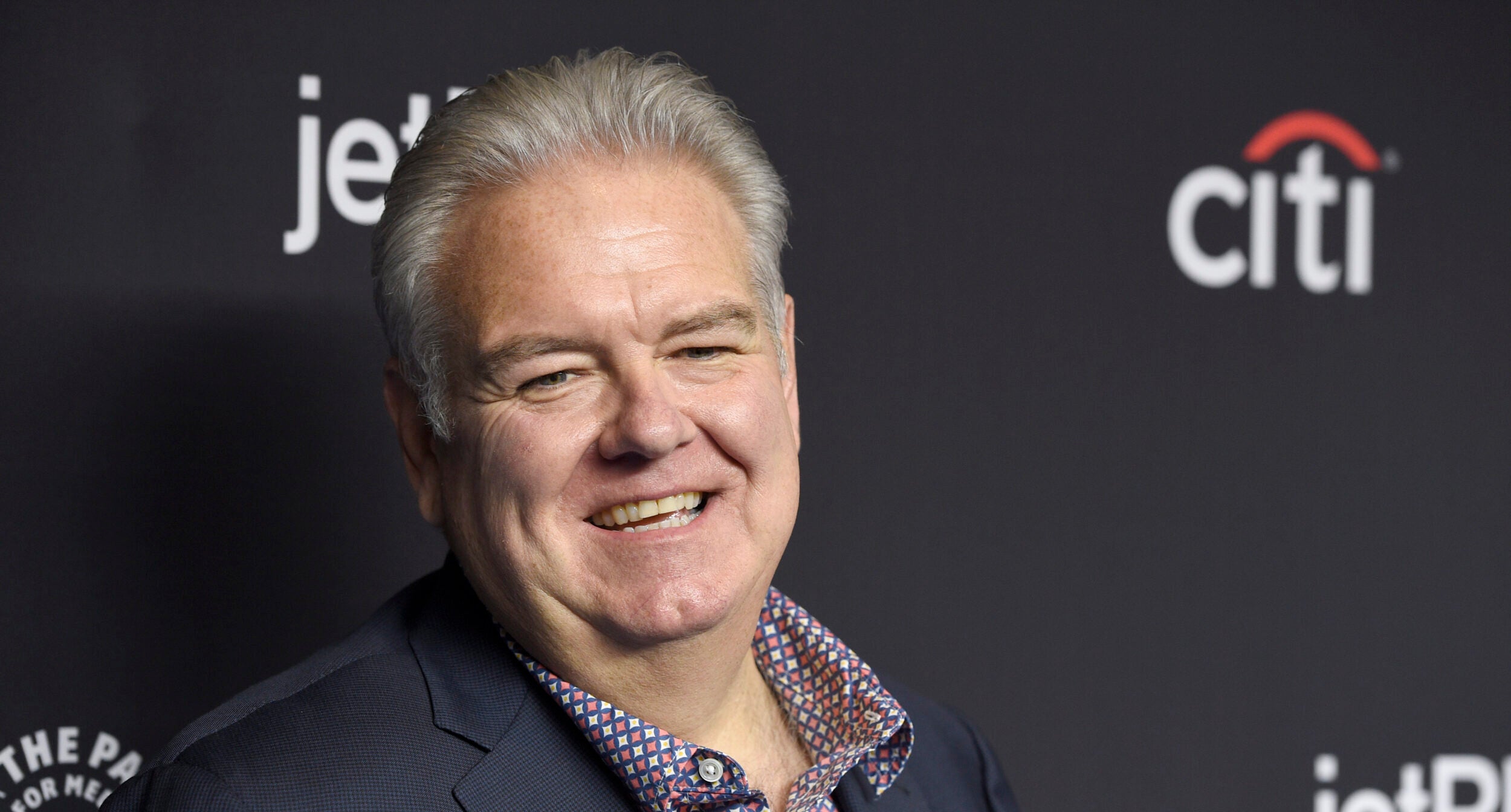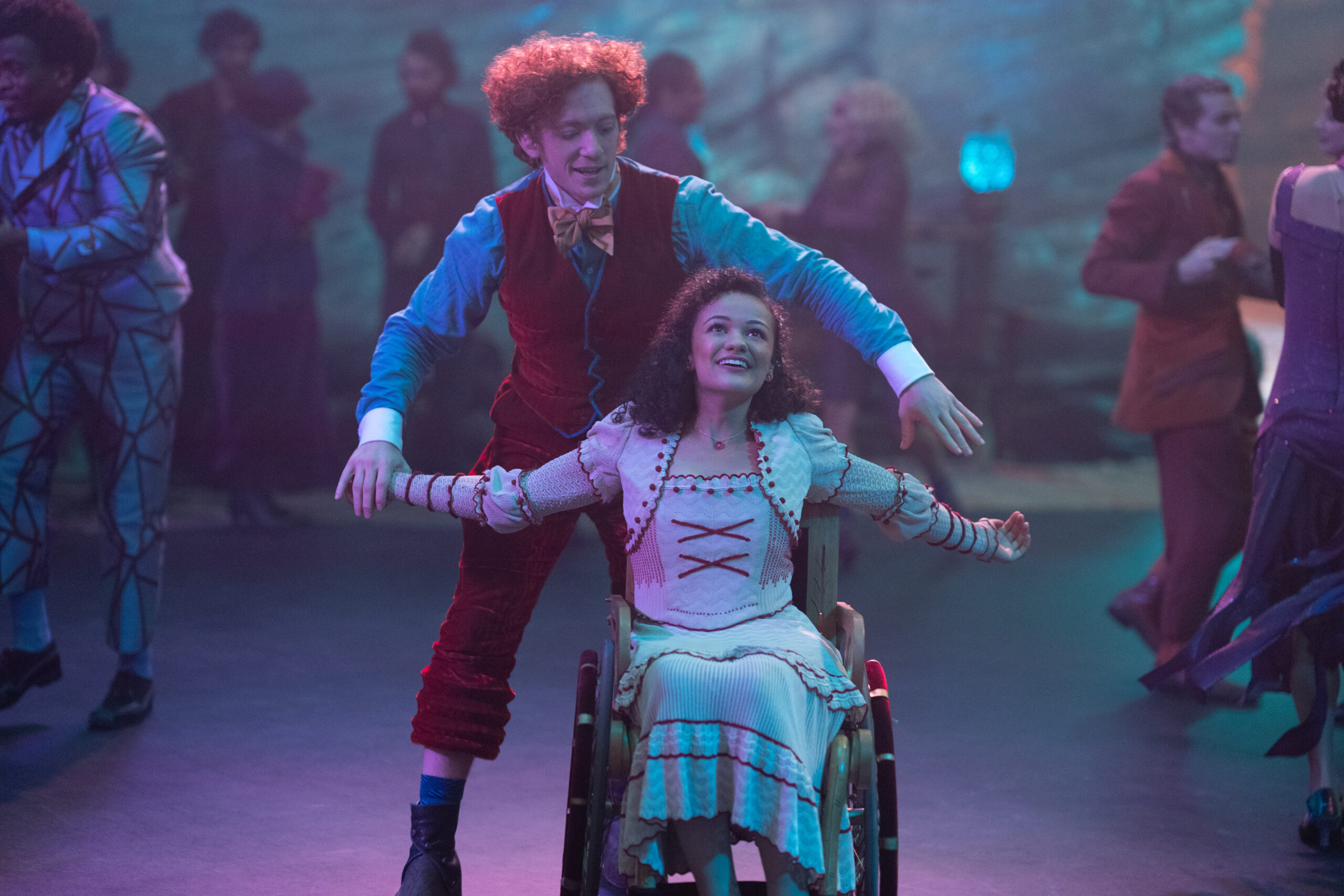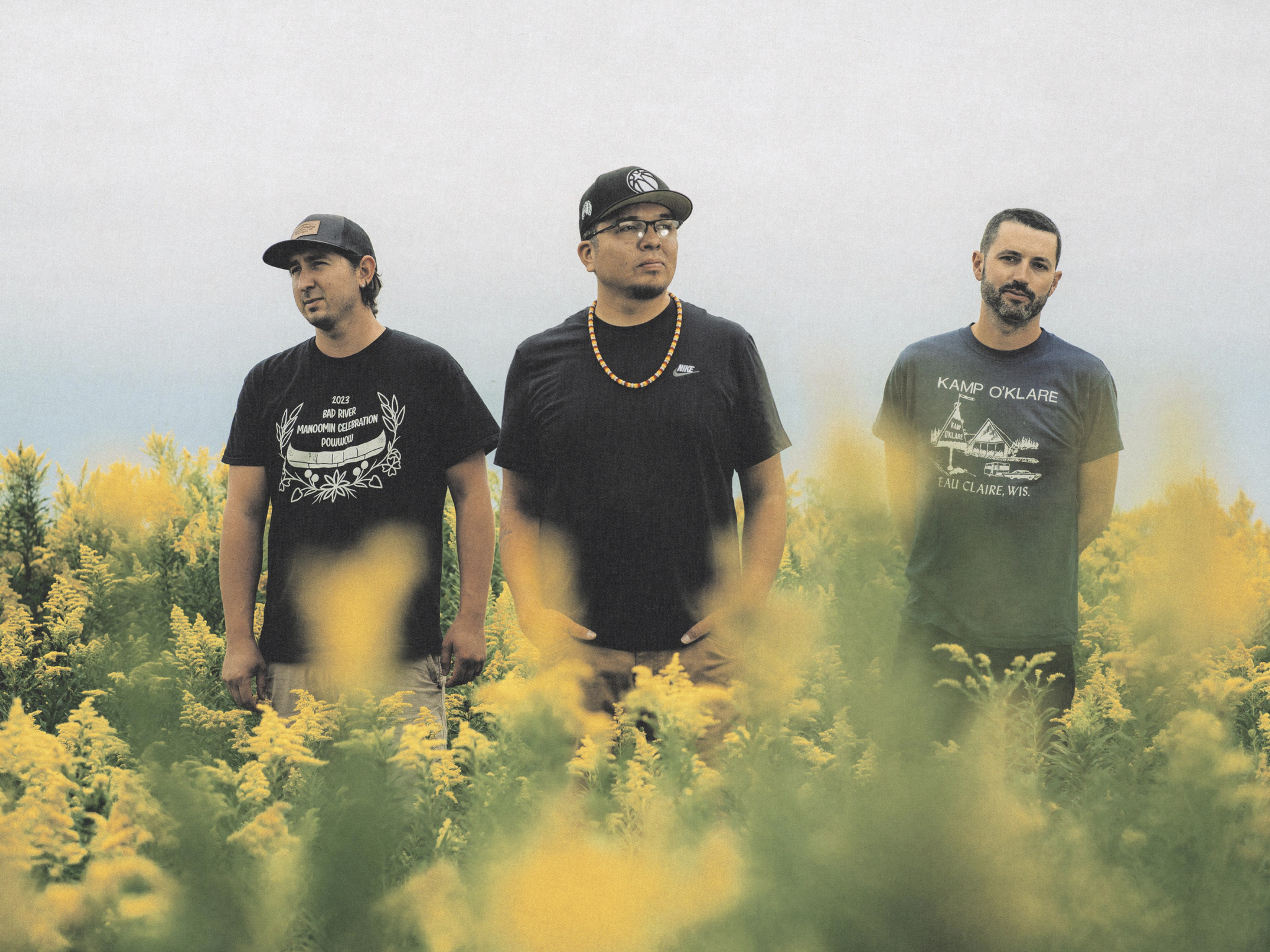D.C. crime novelist George Pelecanos on his hit HBO series “The Deuce” and his novel “The Man Who Came Uptown.” Plus, writer Courtenay Hameister on overcoming anxiety and obsessive compulsive disorder. And, “Jeopardy!” champion Ken Jennings on how comedy is conquering our culture.
Featured in this Show
-
Crime Novelist And 'The Deuce' Creator George Pelecanos Puts In The Work
Crime novelist George Pelecanos has always drifted to blue-collar stories in his work. The author of 20 novels set in his hometown of Washington, D.C., Pelecanos eschews the glitz and gloss of K Street and The Hill political drama for the grime and grit of the district’s work-a-day class of residents and hoods.
“Nobody was writing about the city, the living city, with people who have been here for generations,” Pelecanos told WPR’s “BETA.” “All the books were political or (about) the Pentagon and I’m not interested in that at all, but I wanted to read about the town that I knew.”
His oeuvre covers Washington from WWII through today. Pelecanos says that’s intentional. His hope is that one day someone can step into a library, pick up any volume of his work, and get a snapshot of the district during any era.
“As I started and got into it a little bit, I figured out what I was going to do with my life, which was chronicle this city, its history and its present,” Pelecanos said. “I’m leaving a record.”
His latest novel, “The Man Who Came Uptown” doesn’t stray from this formula. It follows a protagonist, Michael, who finds a love for books and reading while in prison. After his release into a contemporary and gentrifying Washington, Michael uses his newfound passion to realign his life even as his old life of crime threatens to pull him back into the fray.
This concept of D.C. gentrification is a new development in Pelecanos’ work. While Pelecanos himself may still pine for the D.C. of the 1970s, he admits that a lot of that feeling is based in nostalgia. He feels the city is in a lot better shape today than when he was growing up, but might be facing a new hurdle.
“The only thing that I still feel we need to work on is keeping people in the city that work here and producing enough affordable housing so that a lot of different kinds of people can live in the city, not just elites,” he said.
This instinct to read and write about the people he knew growing up in the district began at Pelecanos’ own literary awakening. His love for books started when he decided to take an elective course in crime fiction during his senior year at the University of Maryland.
“I had always been forced to read books in high school that didn’t speak to my world,” he said. “(Crime novels) were about working class people and it’s a world where’d I grown up.”
“I discovered a branch of American literature that was, in my opinion, populist. It got me stoked,” he said.
Pelecanos’ father owned a Greek diner in the city. All of the people who worked there were working class and the exact kind of characters that populate Pelecanos’ novels. It also inspired George’s own work ethic and his desire to work for himself.
“I saw him turn the key on his business every day and I saw that it made him very happy to be his own man,” says Pelecanos.
Pelecanos dedicated “The Man Who Came Uptown” to noted crime novelist Elmore Leonard and pulp author Charles Willeford. Leonard’s Westerns were a big influence on Pelecanos and are favored in his new novel by his protagonist, Michael.
Willeford’s work, on the other hand, is likely lesser known, but Pelecanos cites Willeford’s novel “Pick Up” for the ambiguous approach the author took to the protagonist’s race.
“He’s black and you don’t know it until the end of the book,” Pelecanos said. “It forces you to go back and reread the book because the meaning of everything changes.”
Pelecanos — himself a product of a racially diverse city and patriarch to a multiracial family — has quietly worked this same conceit into “The Man Who Came Uptown.”
“It’s an homage to him. The reason I did it was it just always bothered me that, myself included, white writers will always say, ‘And then I saw a black guy on the corner,’ but they will never say, ‘And then I saw a white guy on the corner.’”
Pelecanos’ ability to capture this voice and to do so with realism and heart led to his second act as an Emmy-nominated television writer. He was a major creative force behind HBO’s critically acclaimed series, “The Wire,” which was a show that dissected the working class institutions of an American city.
When George’s crime writing colleague Laura Lippman’s husband David Simon launched “The Wire” he pegged Pelecanos to write the penultimate episode of the first season due to the strength of George’s fiction.
In the episode, Pelecanos wrote an uncompromising and heart-breaking scene of childhood friends forced to kill one of their own. It is one of the most powerful and memorable scenes of the show’s entire run.
“People, I don’t want to say, they liked it because it’s a very sad thing to depict on screen, but they thought it was pretty good and well done. After that, David gave me that episode where consequently a lot of things happen,” Pelecanos said.
“Penultimate Pelecanos” became somewhat an angel of death in the series writing room, knocking off many of the fan’s favorites or the show’s most memorable characters throughout the show’s five-season run. He would retain that role on Simon’s later project, the HBO series “Treme,” about a recovering New Orleans in the wake of Hurricane Katrina.

George Pelecanos on the set of season 2 of “The Deuce” with director Steph Green. Photo courtesy of HBONow, Pelecanos has teamed up with Simon to create HBO’s new crime series, “The Deuce.” Set in the 1970s-era Times Square in New York, the show depicts the rise of the porn industry and is, of course, filled with blue-collar types and low-level hoods all making their way in this gritty version of the Big Apple.
Pelecanos has relished the opportunity to move from the writer’s room to the show runner’s chair.
“I like running things in the same way that I like the control of being a novelist. All these years, it’s just been me writing these books and I wanted to get to that same place in television,” he said. “That’s been a good thing for me. I’m very goal oriented. Obviously I’ve done a lot in my career, and I continue to work really hard, and I’m going to keep doing it.”
-
Courtenay Hameister Conquers Her Fears — Well, A Lot Of Them — With 'Okay Fine Whatever' Project
Courtenay Hameister has struggled with anxiety and obsessive-compulsive disorder for a long time. Her OCD is known as “harm-focused.” People with this condition convince themselves they’ve done something terrible, even though they haven’t.
Hameister writes about her mental health struggles in a memoir called “Okay Fine Whatever: The Year I Went From Being Afraid of Everything to Only Being Afraid of Most Things.” Hameister also hosted the syndicated public radio variety show, “Live Wire!,” for several years.
But one night in 2013 something happened.
“So on that Monday what I called my dread ball would arrive, and it would be this about the size of a golf ball maybe,” Hameister told WPR’s “BETA.” “And then as the week progressed, my dread ball would grow and it would sort of push out my breath. Because that’s what happens a lot when you have anxieties, you can’t take a deep breath and it feels like something’s blocking your lungs. And then by the Saturday, I would sort of be inside of the dread ball. Like it was this giant hamster ball I was walking around in. And it really dulls your vision of the world and it dulls your ability to take in information and to put out information because you’ve got this white noise essentially in your brain.”
Hameister said that it was an unmanageable situation.
It was two days before the 9th anniversary show for “Live Wire!” and her dread ball turned into a massive OCD-infused panic attack. Afraid she was going to hurt her housemate, and walking around in a state of constant panic, she called her brother. She explained how obligated she felt to the show, and those counting on her — the audience, the show’s staff and all of the stations “Live Wire!” aired on.
“He just gave me this look that really said it’s super adorable that you think you’re this important, but it’s gonna be OK and the world’s gonna keep turning. And you need to call your producer,” she recalled.
So Hameister didn’t host the show that night and she ended up giving up her hosting duties. She continued to work as the head writer for “Live Wire!.” Then she came up with an idea that she called the “Okay Fine Whatever” project.
“I thought, what if I just did a lot of things that might scare me a little bit? Because I’d obviously pushed my boundaries too far by doing ‘Live Wire!’ for so long. What if I did smaller things?” Hameister said.
“Anxiety turns you into a pessimist. Anxiety just digs these ruts in your neural pathways that are so difficult to get out of,” she continued. “You think about doing something and your brain immediately goes to it’s not gonna work or here are the 12 terrible things that are gonna happen, you know, right? This is what anxiety does to you. And I didn’t think that I would turn into an optimist. I really would have loved to. But I just thought maybe I can not think that everything’s gonna be terrible.”
Of course before she could undertake the project, Hameister had to draw the line as to which uncomfortable experiences she’d be willing to undertake and which experiences would make her too uncomfortable. She wanted the experiences to challenge her, but not push her into full blown panic.
“I absolutely didn’t want things that actually put me in physical peril because I knew that that was way beyond my comfort zone,” she said. “If my comfort zone was in Oregon, I didn’t want to go all the way over to New York. I wanted to be, actually, maybe around Wisconsin, frankly. Right? So, I wanted sort of Wisconsiny experiences.”
Among the experiences she felt that she could stomach were spending an afternoon in a sensory deprivation tank, having a session with a professional cuddler and going on 28 first dates.
How Hameister kept track of all of those dates? She created a spreadsheet.
“I thought if I approach this scientifically, then my brain’s not going to fail me or my heart’s not going to be quite as involved. I’m going to be a scientist about this and just kind of look at the facts and the numbers,” she said. “I had all these categories like ‘my attraction to him,’ ‘his attraction to me.’ One of them was ‘loves to talk about ideas,’ ‘has a job he’s passionate about.’ And a couple of months into it, I put ‘has a car.’ I think you got one point for a car and zero points for not a car. ‘Great conversation’ was one. And so I rated people from 1 to 10, I’m so sorry, but I did it in all of these categories.”
She said that the experience that was the most successful in terms of getting her out of her comfort zone was her session with professional cuddler Samantha Hess.
“The idea of needing someone like that (a professional cuddler) is so intensely vulnerable. And that is part of the reason why I was trepidatious about it was that I have been single for the majority of my adult life. And I felt so much shame around that. And I felt so much shame around how much I needed to be touched,” Hameister said. “I used to do breath work for ‘Live Wire!’ to sort of calm me down, and I remember lying on the floor with the person that I was working with and she touched my hand … and I started crying because no one had touched me for so long.”
“It’s this incredible reminder that you’re not getting what you want in your life. I think that seeing her made me realize that there’s not something wrong with me because I want physical affection, and I need it. I’m just human. I’m just a human being,” she added.
For those who struggle with anxiety and OCD, Hameister has some advice:
“I believed that becoming more adventurous — and it’s not going to kill you — was sort of a muscle and I found that the more that I did it, the more comfortable that I got doing it,” she said. “And that’s a lot to ask somebody who’s anxious, but I would say that that worked for me. Toward the end, I started going to a therapist who really started to teach me mindfulness. I find breathing magical so get an app, something like the Calm app … people say, ‘Don’t tell me to breathe.’ They think it’s woo-woo. It’s not. It’s science. When you breathe deeply into your diaphragm and those muscles push out in your belly, there are chemicals that are released that tell your brain that everything’s OK,” she said.
Adding, “and mindfulness, the reason that we are anxious is that we are freaked out and full of shame about past mistakes that we made that we can’t let go of and we are terrified of the future. We are living in the past and the future and it is driving us crazy literally. And what mindfulness does is it forces you to just be in the present moment and look at what is in front of me right now and can I deal with that?”
-
Former 'Jeopardy!' Champion Ken Jennings Is All Laughs
Ken Jennings made a name for himself in June of 2004 when he became a “Jeopardy!” champion, defending his reign 73 more times.
Jennings’ streak is the longest in the game show’s history and he holds a Guinness Book of World Records for “Most cash won on a game show” with more than $2.5 million in winnings. Serious winning aside, Jennings had no problems having fun on the show.
His new book, “Planet Funny: How Comedy Took Over Our Culture,” traces the history and trends of comedy’s ascension and eventual invasion into our culture. He joined WPR’s “BETA” and cleared the board on humor.
‘EVERYONE’S A COMEDIAN’ FOR $200
“I think just because (being funny) is so hard to back out of, you know. Once somebody has decided to be funny, anybody else who comes back kind of earnest and heart-felt or, even worse, solemn and humorless, just seems stodgy and out of touch by comparison,” Jennings said. “So humor is a ratchet in a culture that only works one way. Things can get more funny all the time and then they seem fun and edgy and youthful and transgressive. But you can never wind it back. So what we’re seeing now is that ratchet increasing in almost every area of public life.”
‘RUSSIAN POETRY’ FOR $400
“There was a Russian futurist poet named Velimir Khlebnikov. He considered himself a bit of a seer. He actually predicted the internet. He predicted the Leninist revolution in Russia. And he wrote a poem called ‘Incantation by Laughter,’ which is kind of a celebration of laughter above all. And to me, it predicts the next century of human civilization very well,” he said.
“I like how it’s just a series of kind of invented words and riffs on the word ‘laugh.’ You know, in Russian, as in English, ‘laughlings’ and ‘laughterhood’ and ‘belaughable’ — these are not words. But it really reminds me of how our idea of what a joke is and how it can be structured has just mutated endlessly like a fractal or a snowflake in the 20th and now in the 21st century,” Jennings added.
‘ONLINE COMEDY’ FOR $600
“Part of it is it turns us all into comedians. We’re no longer an audience out there with our drinks laughing in the darkness. We’re all like ‘Ooh, I gotta get in here. What can I say?’ So you have that little white rectangle in Twitter that wants you to just make a joke, make a joke, be funny like these people. And that’s not good for your brain to always be the guy who’s trying to think of a joke. It’s also not good for your relationships, I think. It’s not good spiritually,” Jennings said.
“But also just the fact that I had this machine in my pocket that could just give me this endless stream of amusement any time I looked on it. I found it very addictive. The brain doesn’t have a satiety signal for internet content the way it does for food or sex or even heroin, you know. That’s something you can get addicted to and your brain will just never get enough. It wants you to just keep checking your phone for new jokes until you die,” he added.
‘WOKE AUDIENCES’ FOR $800
“I’m not against this new woker audience, honestly. I think it’s great that instead of giving comedians a pass and being like, ‘Well, he said something awful but he’s a comedian. It’s just Rosanne being Rosanne.’ I like the idea that we’re actually able to grapple with these things now and say, ‘Well, hold on. What are the effects of that joke? Why wouldn’t you flip the joke around so it actually took on someone in a powerful position instead of a weaker one?’ Or any of these endless discussions that we have about jokes today,” he said. “I think that’s great that we’re thinking more seriously because if humor’s going to be a dominant force in our culture, we can’t just give everybody a hall pass to make whatever awful jokes they want.”
‘GRAND UNIFIED THEORIES’ FOR $1,000
“The thing that satisfies me most as a unified theory is just the idea that there’s an evolutionary reason maybe for comedy, that our primate ancestors needed to find it pleasurable when they found some little absurdity or incongruity in life. And then they solved the problem. They thought, ‘Oh, I see why I tried to stab the fish but I missed. Or I tripped over the vine in the path, you know.’ The caveman who didn’t find that pleasurable, to make those little discoveries, immediately died out all by tripping over vines. But the ones who could laugh at it lived to fish another day,” Jennings concluded. “So comedy may have been how we became human.”
Episode Credits
- Doug Gordon Host
- Doug Gordon Producer
- Adam Friedrich Producer
- Steve Gotcher Technical Director
- George Pelecanos Guest
- Courtenay Hameister Guest
- Ken Jennings Guest
Wisconsin Public Radio, © Copyright 2025, Board of Regents of the University of Wisconsin System and Wisconsin Educational Communications Board.



